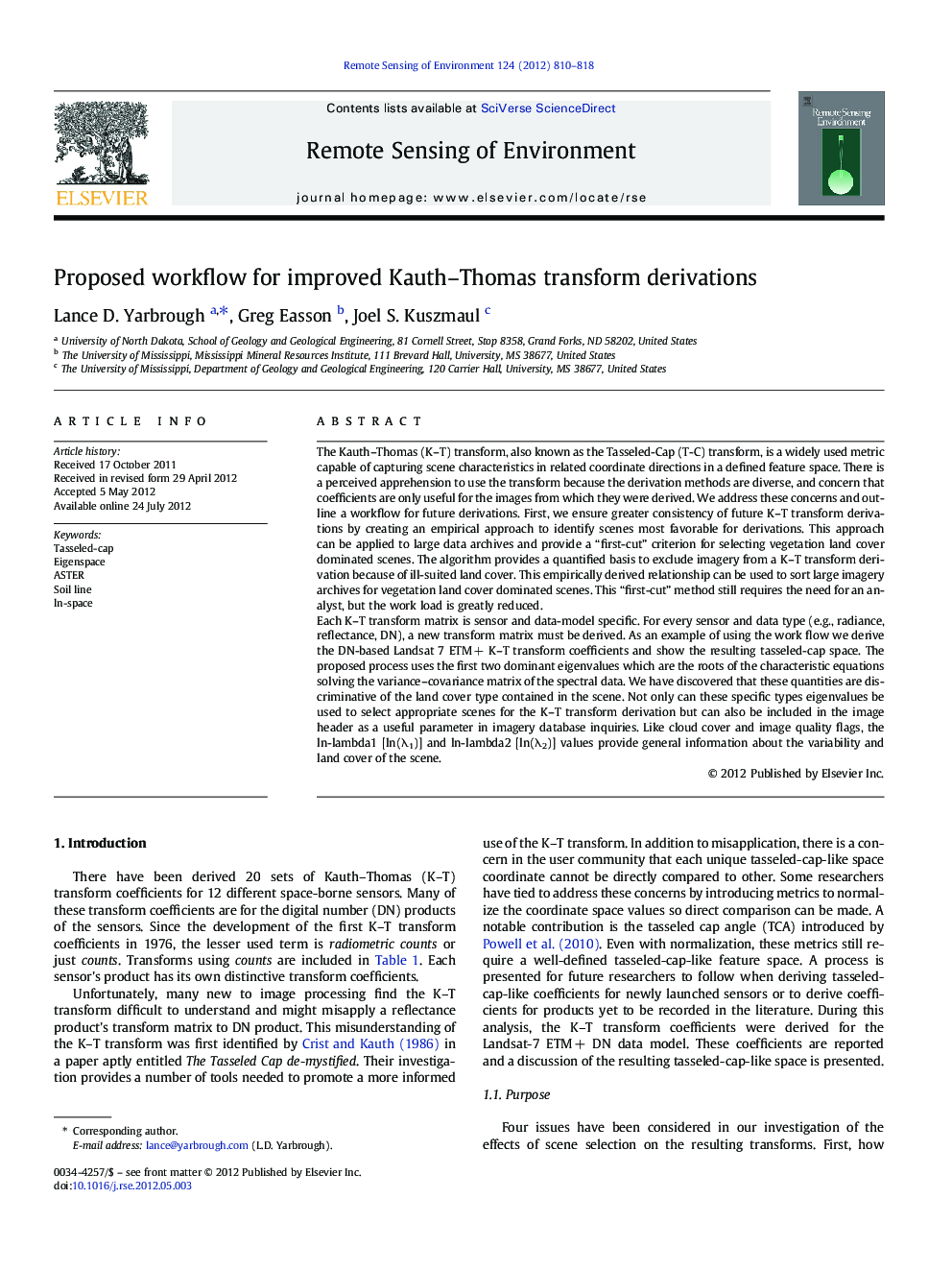| کد مقاله | کد نشریه | سال انتشار | مقاله انگلیسی | نسخه تمام متن |
|---|---|---|---|---|
| 4459050 | 1621276 | 2012 | 9 صفحه PDF | دانلود رایگان |

The Kauth–Thomas (K–T) transform, also known as the Tasseled-Cap (T-C) transform, is a widely used metric capable of capturing scene characteristics in related coordinate directions in a defined feature space. There is a perceived apprehension to use the transform because the derivation methods are diverse, and concern that coefficients are only useful for the images from which they were derived. We address these concerns and outline a workflow for future derivations. First, we ensure greater consistency of future K–T transform derivations by creating an empirical approach to identify scenes most favorable for derivations. This approach can be applied to large data archives and provide a “first-cut” criterion for selecting vegetation land cover dominated scenes. The algorithm provides a quantified basis to exclude imagery from a K–T transform derivation because of ill-suited land cover. This empirically derived relationship can be used to sort large imagery archives for vegetation land cover dominated scenes. This “first-cut” method still requires the need for an analyst, but the work load is greatly reduced.Each K–T transform matrix is sensor and data-model specific. For every sensor and data type (e.g., radiance, reflectance, DN), a new transform matrix must be derived. As an example of using the work flow we derive the DN-based Landsat 7 ETM + K–T transform coefficients and show the resulting tasseled-cap space. The proposed process uses the first two dominant eigenvalues which are the roots of the characteristic equations solving the variance–covariance matrix of the spectral data. We have discovered that these quantities are discriminative of the land cover type contained in the scene. Not only can these specific types eigenvalues be used to select appropriate scenes for the K–T transform derivation but can also be included in the image header as a useful parameter in imagery database inquiries. Like cloud cover and image quality flags, the ln-lambda1 [ln(λ1)] and ln-lambda2 [ln(λ2)] values provide general information about the variability and land cover of the scene.
► We develop an empirical approach to identify scenes most favorable for derivations.
► For scene selection, specific comparisons are made with QB-2 data.
► Derivation of DN-based Landsat 7 ETM + K–T transforms coefficients.
Journal: Remote Sensing of Environment - Volume 124, September 2012, Pages 810–818